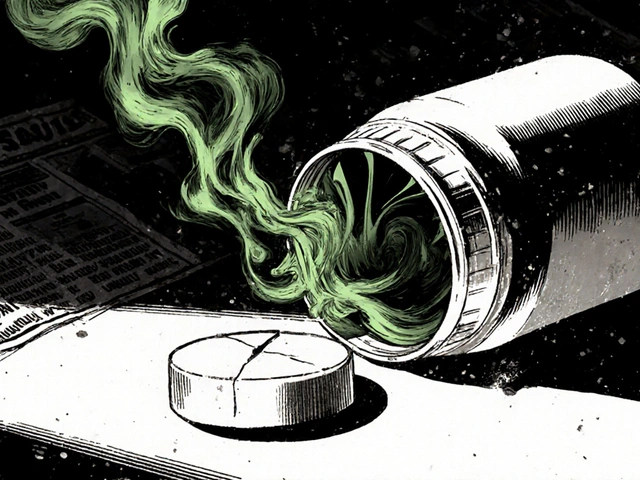Acid Reflux – What It Is and How to Feel Better Fast
If you’ve ever felt a burning flash behind your breastbone after a big meal, you’ve met acid reflux. It’s that uncomfortable rise of stomach acid into the esophagus, and it can turn any day sour. The good news? Most people control it with small habit tweaks and a few over‑the‑counter options.
Spotting the Common Signs
The classic clue is heartburn – a hot, painful feeling that climbs up your throat, often after eating or when you lie down. You might also notice sour taste, hoarseness, chronic cough, or a lump‑like sensation in your throat. If these pop up more than twice a week, it’s time to look closer.
Acid reflux isn’t just about the burn; some folks get chest pain that mimics a heart attack. When in doubt, always check with a doctor, especially if you have trouble swallowing or unexplained weight loss.
Everyday Triggers You Can Dodge
Food and drink are the main culprits. Spicy dishes, fried foods, citrus, chocolate, mint, coffee, and alcohol often loosen the lower esophageal sphincter, letting acid escape. Large meals or eating right before bed also raise the risk.
Beyond diet, tight clothing, smoking, and stress can worsen reflux. Even a pillow that lifts your head a few inches while you sleep helps keep acid down.
Quick Relief Options
If you need fast relief, antacids like calcium carbonate neutralize stomach acid within minutes. For longer‑lasting control, H2 blockers (e.g., ranitidine alternatives) or proton pump inhibitors (PPIs) reduce acid production for up to 24 hours. Always follow the label and talk to a pharmacist if you’re unsure which option fits your needs.
Natural aids can help too. Chewing gum after meals stimulates saliva, which washes acid away. A spoonful of honey or aloe juice may soothe irritation, but keep portions small to avoid extra sugar.
Long‑Term Lifestyle Tweaks
Weight loss, even a modest five‑percent drop, often eases pressure on the stomach and cuts reflux episodes. Try smaller, more frequent meals instead of three giant plates. Elevate your bed’s head by 6–8 inches with a wedge pillow or sturdy blocks.
Stay upright for at least two hours after eating. If you love coffee, switch to low‑acid blends or decaf. Replace carbonated drinks with water or herbal teas like ginger or chamomile, which can calm the gut.
Remember, acid reflux is manageable. By recognizing symptoms early, steering clear of trigger foods, and using simple remedies, you can keep the burn at bay and enjoy meals without fear.
GERD and Acid Reflux: How PPIs and Lifestyle Changes Work Together
GERD and acid reflux can be managed effectively with lifestyle changes and short-term PPI use. Learn how to reduce symptoms, avoid long-term medication risks, and find lasting relief without relying on pills.
The Connection Between Functional Dyspepsia and Acid Reflux
In my latest research, I've discovered an intriguing connection between functional dyspepsia and acid reflux. Both conditions involve the digestive tract and often cause discomfort, but they're not the same thing. Functional dyspepsia, characterized by consistent upper abdominal discomfort, is a chronic disorder that can significantly impact your quality of life. Acid reflux, on the other hand, is when stomach acid frequently flows back into the tube connecting your mouth and stomach, leading to symptoms like heartburn. The two conditions can coexist, complicating diagnosis and treatment, but understanding their relationship is crucial for effective management.
About
Health and Medicine, Health and Wellness
Latest Posts


Nitrosamine Contamination in Generic Drugs: Recent Recalls and Regulatory Shifts
By Orion Kingsworth Nov 17, 2025

How to Safely Dispose of Expired Medications: FDA Take-Back Guidelines and Best Practices
By Orion Kingsworth Dec 24, 2025

The Healing Power of Pu-Erh Tea: A Dietary Supplement for a Healthy Mind and Body
By Orion Kingsworth Jul 21, 2023

